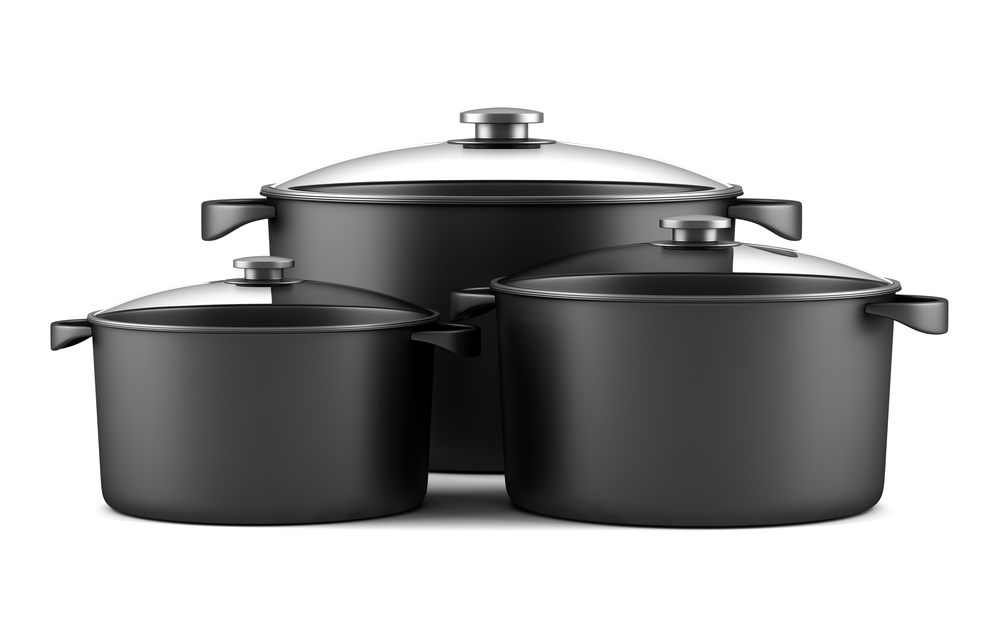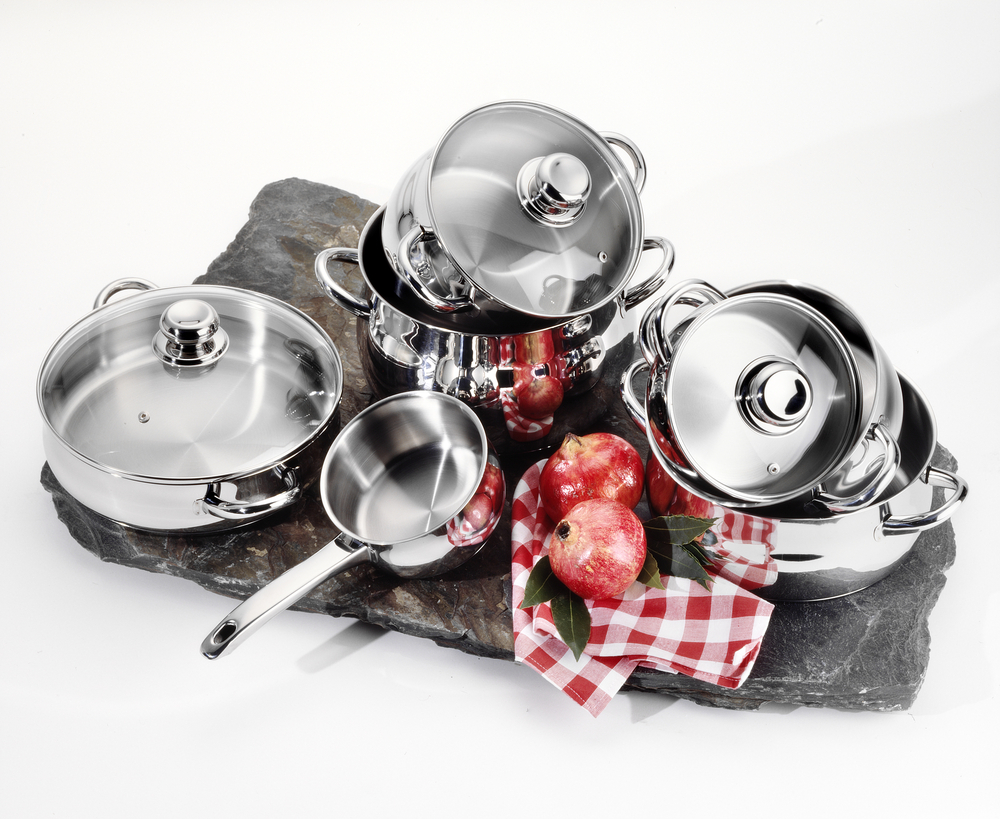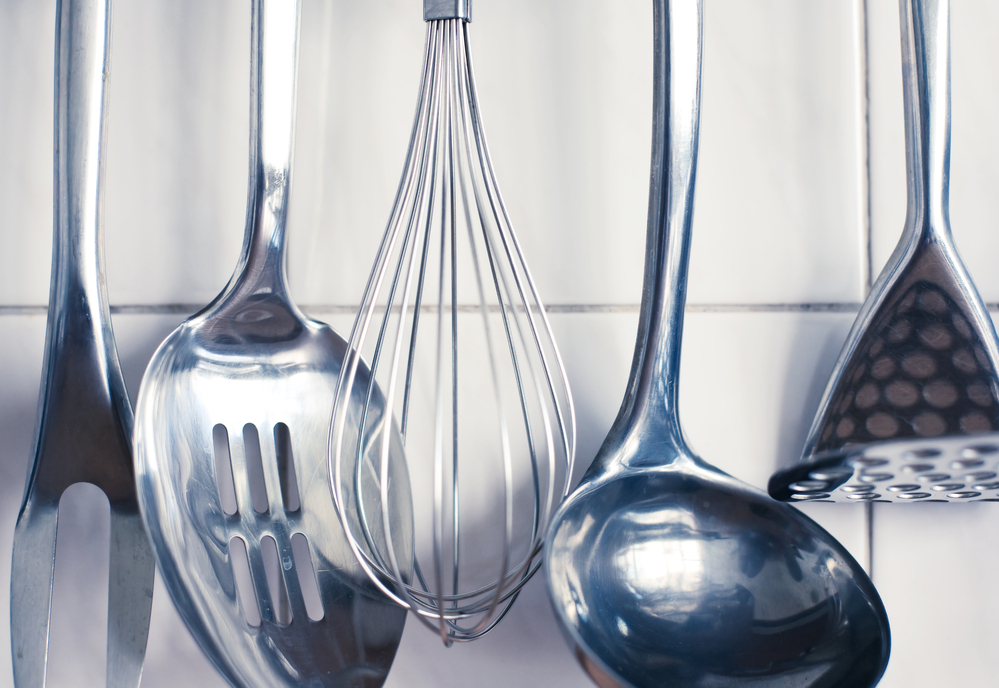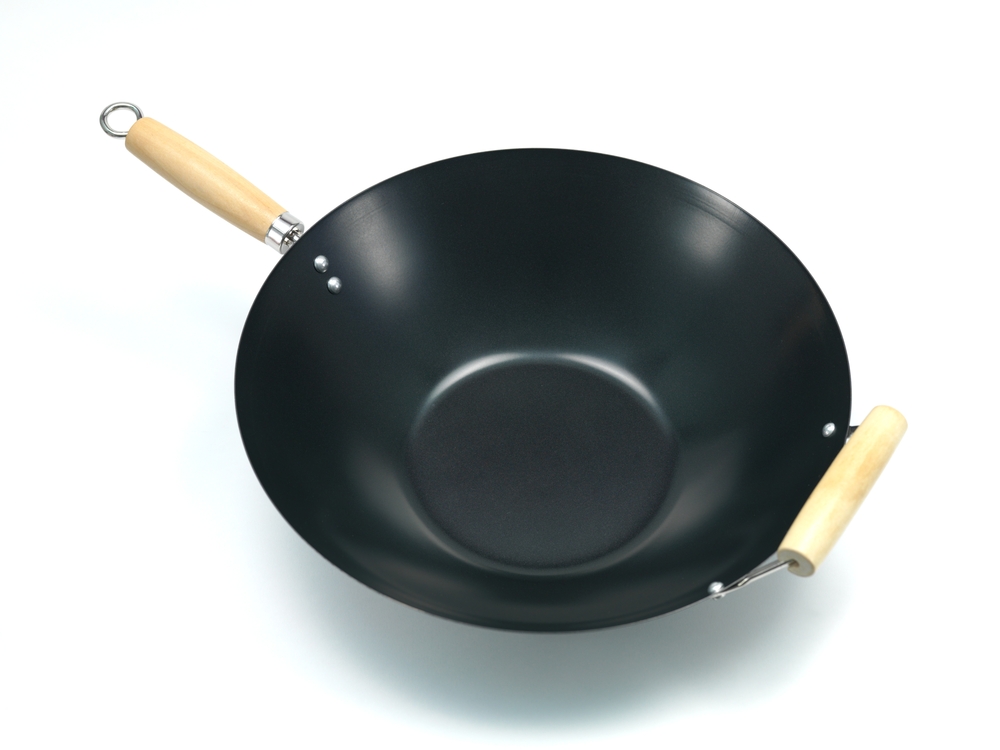When you go to purchase a new pan, there are two main types of pans that you’ll see: Teflon-coated pans and stainless steel pans. They are both advertised as versatile pans that can be used to cook almost any dish, but which one is right for you?
The type of pan that you choose will depend on the foods you like to cook. Teflon-coated pans work best for foods that are prone to sticking. Stainless steel pans work best for foods that need to be heated to very high temperatures.
There are several other advantages and disadvantages to each type of pan that are important to consider before making your final decision.
Teflon and Stainless Steel Overview
Teflon pans are not technically made out of a metal called Teflon. Instead, Teflon pans are made from any metal, frequently from stainless steel, and are then coated in a chemical that typically goes by the brand name Teflon. This chemical allows the pans to be virtually non-stick and almost completely eliminates the need for cooking oil.
Stainless steel is made from a mixture of metals and is very durable at high heat. However, it is not the best heat conductor and needs a little extra help to cook food evenly. Most stainless steel pans actually contain a core of copper or another metal to help them conduct heat evenly.
What is Teflon?
If you’ve ever used a non-stick pan to fry your eggs up in the morning, chances are you’ve used a pan with Teflon. It was invented by a young scientist, Roy Plunkett, in the early 1900s and was found to have amazing non-stick properties. Now, it is mainly used in cookware but that wasn’t always the case.
Initially, Teflon was used to make artillery shells in the military. Teflon was not used in cookware until a French engineer, Marc Gregoire, began to manufacture pans coated in the chemical. This idea came from his wife who, after seeing its non-stick properties, thought that it could also be used for cooking. Ever since then, the popularity of Teflon has continued to grow.
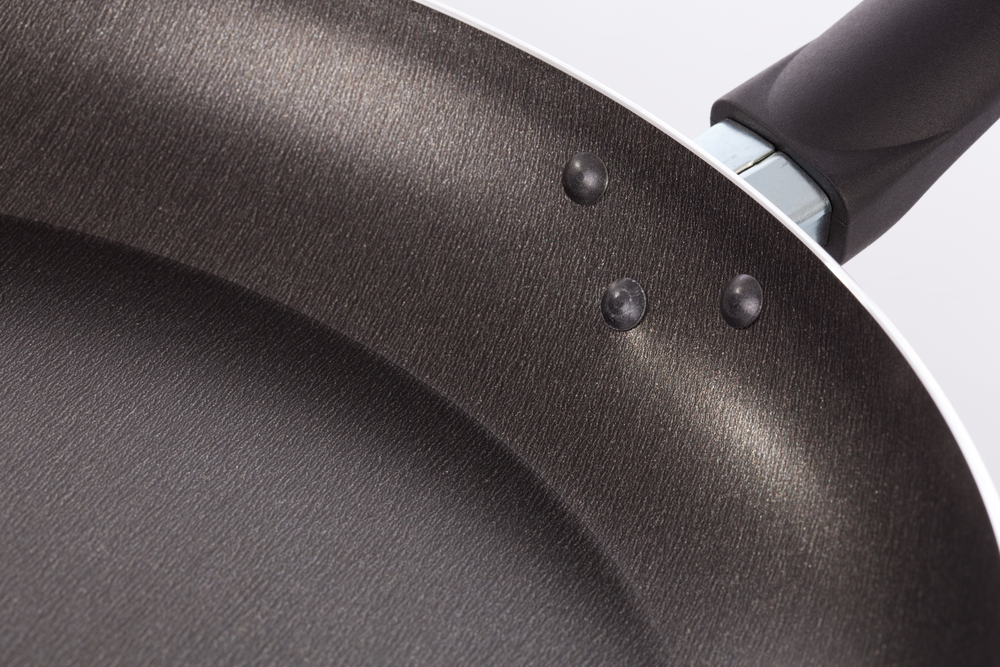
To make Teflon-coated pans the company will first manufacture their standard metal pans. Then, as a last step in the process, the pans will be sprayed with liquid Teflon. Once the Teflon dries the pan is officially non-stick and can be used to cook everything from eggs to pancakes to scallops without having to worry about your food sticking.
The Teflon Controversy
In recent years, non-stick pans have come under fire for the supposed dangerous chemicals that Teflon can release when heated.
When kept at room temperature, Teflon is safe and does not leach chemicals into the environment. However, when heated to high temperatures, studies have shown that Teflon begins to break down and can release toxic chemicals into the air.
Inhaling these chemicals can lead to what is now known as the “Teflon flu” which includes symptoms of headache, fever, chills, and body aches. There have even been some cases where people suffered from lung damage as a result of the “Teflon flu.”
As scary as that sounds, studies have shown that as long as you keep Teflon at relatively low temperatures, below 500 degrees Fahrenheit, it does not release any toxins into the air and is completely safe to use.
Pros
- Non-stick
- Easy to clean
- Good for stick-prone foods (eggs, chicken, lean beef)
Cons
- Can release toxins at high temperatures
- Can’t use metal utensils
- Not good for searing or browning
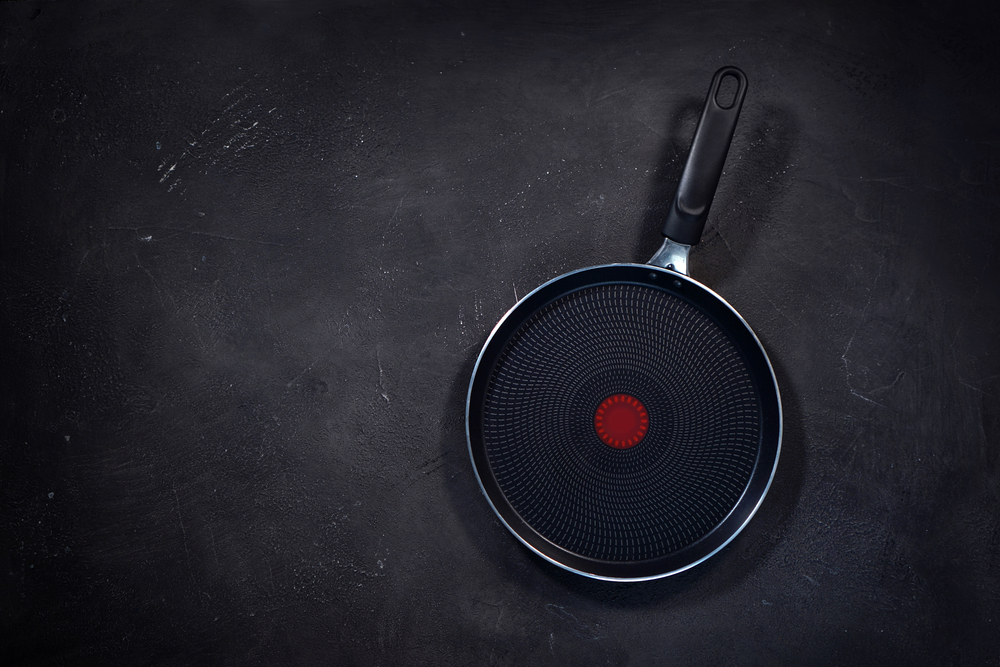
What is Stainless Steel?
Stainless steel cookware has been a popular cookware option for many years. It is made from a combination of iron, chromium, and nickel. This combination of metals allows it to be used at high temperatures, many stainless steel pans are rated for the heat of up to 500 degrees Fahrenheit and some can go even higher.
This high-temperature rating makes stainless steel a great option for things like searing meats. When you sear meat you need the pan to be extremely hot because the goal is that you quickly cook the outside. Then you take the meat off the pan to prevent the center of the meat from cooking all the way through.
Stainless steel is one of the most durable metals that you can use for cooking pans. It is resistant to chipping and you won’t have to worry about scratching your pan when using a metal utensil. Since stainless steel pans don’t have a coating, there’s nothing to worry about scratching off.
One thing to remember is that since stainless steel is made from a mixture of metals, it’s important to make sure that you aren’t allergic to any of the metals before using one.
Some people have severe nickel allergies and could have a reaction to food prepared in a stainless steel pan. Although the transfer is minimal, it could be enough to trigger a reaction in someone with a severe allergy.
Pros
- Scratch and chip resistant
- Can be seasoned
- Good for high temperatures and searing
- No health risks
- No peeling
Cons
- Requires oil to be non-stick
- Not the best heat conductor
- More difficult to clean
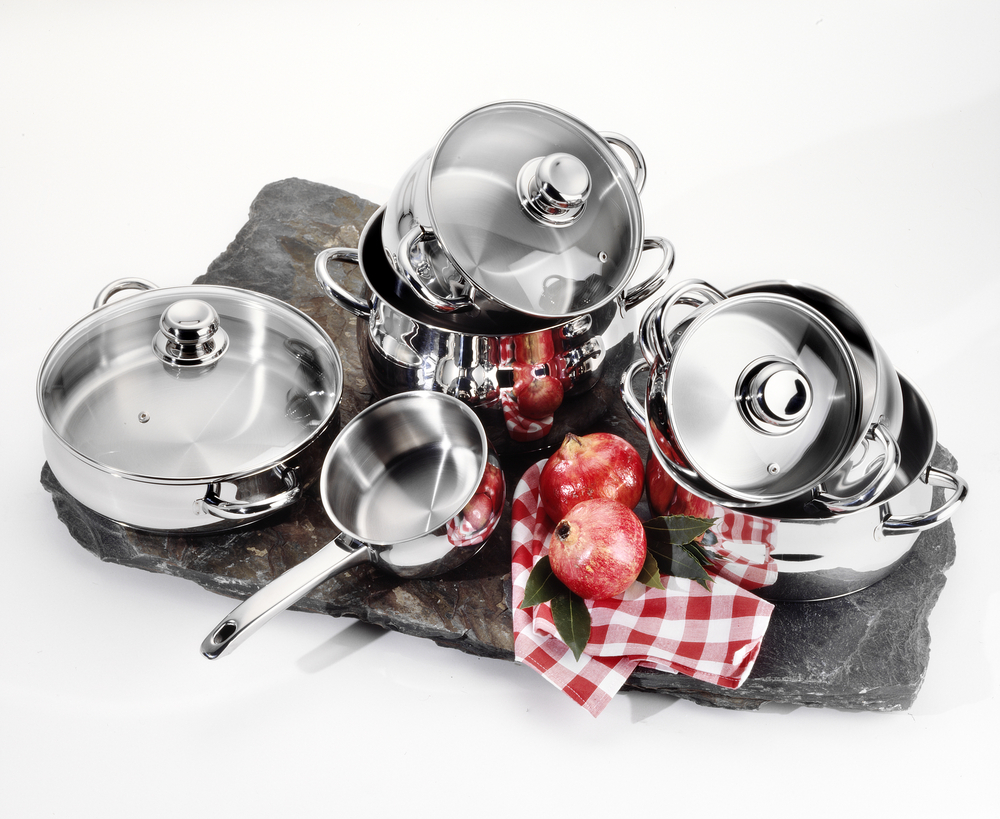
What’s the Difference Between Stainless Steel and Teflon?
To decide which type of pan to use, it’s important to understand the differences between stainless steel vs Teflon. Some of the main differences between the two that you’ll see are in their safety, durability, and functionality.
Safety
Stainless Steel
As long as you don’t have a nickel allergy, stainless steel is considered completely safe to use. It is safe to use at high temperatures and does not release any toxins into your food or the air. Even if you do manage to overheat the stainless steel, the worst thing that will happen is the metal pan warping. This will ruin the pan for cooking but does not create any health risks.
Teflon
In contrast, there are some safety concerns when it comes to Teflon cookware. When it’s not being heated, Teflon is completely safe and does not release any toxic chemicals, or non-toxic chemicals, into the food or environment. However, this changes once the food is heated to high temperatures.
When the pan is heated to high temperatures, around 500 degrees Fahrenheit and above, the Teflon coating will begin to release toxic fumes into the air and food. If these fumes are inhaled they can cause a condition known as the “Teflon flu.” Symptoms of the “Teflon flu” are very similar to those of the regular flu. Long-term exposure can even cause damage to your lungs.
However, studies have shown that as long as Teflon is kept at lower temperatures, the coating remains stable and does not release any toxic chemicals.
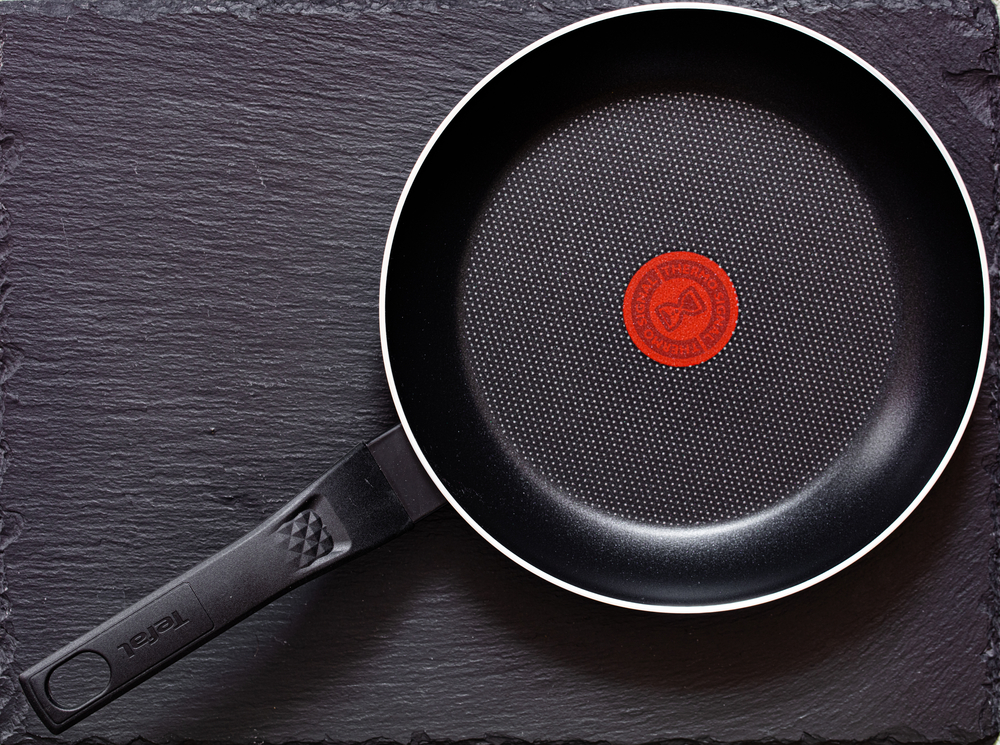
Durability
Stainless Steel
Out of the two, stainless steel is the more durable material. It is resistant to chipping and, unlike with Teflon-coated pans, you don’t have to worry about scratching.
Technically, stainless steel pans can scratch. However, there is no health risk associated with scratching and no negative impact on the longevity of the pan. Most stainless steel pans have no coating which means that even if they get scratched, there is nothing to be scratched off.
Stainless Steel can also be used at higher temperatures. Most stainless steel pans can be used at temperatures of at least 500 degrees Fahrenheit. This makes them great for searing meats which need to be done at extremely high temperatures.
Teflon
Teflon is the less durable of the two materials for cookware. When cooking with a Teflon-coated pan you need to be careful to not use any utensils that could scratch the coating on the pan. This can cause the coating to wear off over time which will shorten the lifetime of the pan.
Depending on the metal used under the Teflon coating, these pans can also be prone to chipping and other damage.
Functionality
One last comparison in the Teflon vs stainless steel debate is their functionality. Both work, but each has certain advantages and disadvantages when it comes to preparing different dishes.
Stainless Steel
Stainless steel is best for cooking foods at high heat. This makes it ideal for searing meats since an extremely high temperature needs to be maintained to get a good sear on the meat.
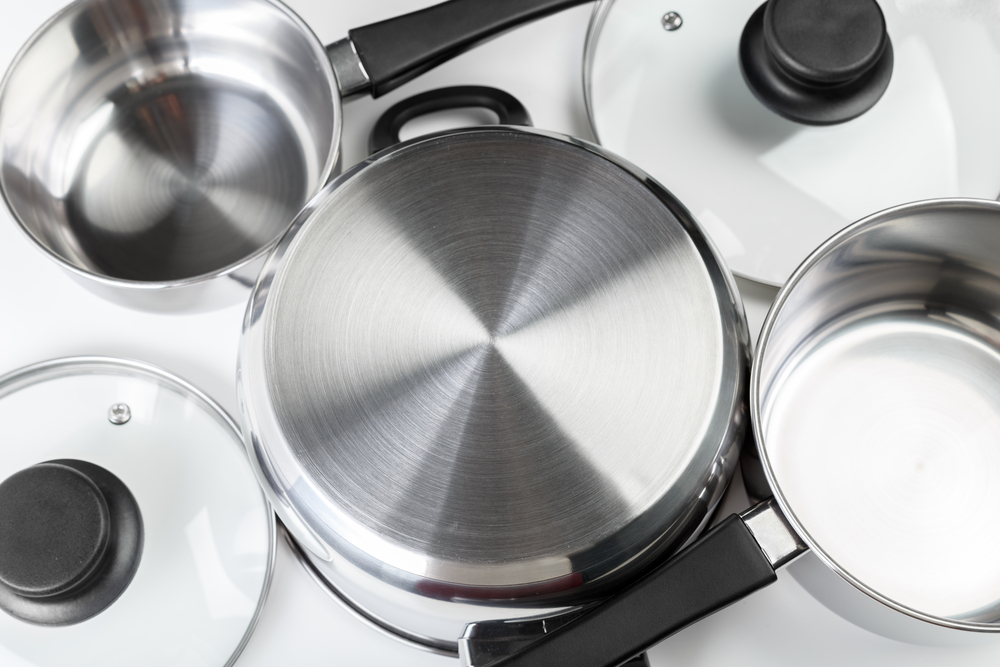
Stainless steel is also good for cooking foods where you want to use a lot of oil and you want the pan to be seasoned. Since the pan usually has no coating, you can create your own coating of sorts using a seasoning technique. If your stainless steel pan is well-seasoned, you can also use it like a non-stick pan.
Teflon
Teflon-coated pans are a great option for foods that are prone to sticking like eggs and high-protein meats. They are also a good tool for someone that is trying to avoid excess oils in their diet and would like to reduce the amount of cooking oil that they use.
The downside to Teflon-coated pans is that they cannot be used to cook at high temperatures and are not ideal for searing meats.
When to Choose Between Stainless Steel and Teflon?
If you are someone who frequently cooks high-stick foods and would prefer to reduce their need for cooking spray, Teflon pans are a great choice. They are perfectly healthy to use as long as you keep them on a relatively low heat. These are very versatile pans that can be used to cook various dishes and are easy to clean for those that hate washing dishes.
Stainless steel pans are the best option for high-heat cooking. They allow you to go up to the high temperatures needed to cook and sear different meats, such as steaks and scallops. They are very durable and can be seasoned making them an option for a more natural non-stick pan.
Final Thoughts
Teflon-coated and stainless steel pans are both useful tools that have their place in everyone’s kitchen. However, they are not always interchangeable and each has its limitations that should be considered.
Teflon-coated pans cannot be used at high temperatures as they can begin to release dangerous fumes. However, they work very well for foods that tend to stick and are super easy to clean.
Stainless steel pans tend to stick and can be more difficult to clean, especially if you accidentally burn something to the pan. However, they can be heated to high temperatures and are extremely durable and resistant to both chipping and scratching.


